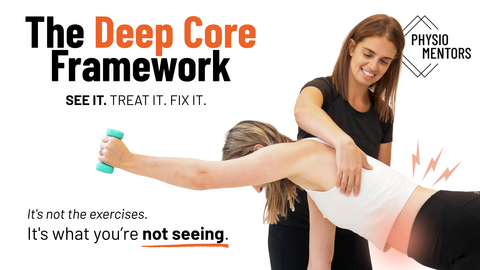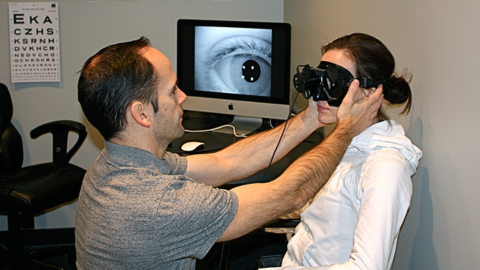Embodia Academy
The course you are trying to fetch does not exist
Featured courses

My Year of Mentorship: Discussion Forum
Carolyn Vandyken
Restricted Access

Pilates for the Equestrian Population
Jessica Bergevin
CA$65.00
Coming Soon

Pelvic Floor Muscle Training & Exercise in Prostate Cancer
Pelvic Health Solutions, Dr. Jo Milios
CA$99.99
‹ Scroll for more ›
Special for Embodia Members View all
Requires membership

How Health Professionals Can Earn More Work Less and Enjoy Life
Karim Meghji, Paul Wright
Free
Get for Free

An Introduction to Pelvic Floor Concerns in Dancers and Artistic Athletes
Brooke R. Winder, Pivot Dancer
CA$25.00
Requires membership

An Introduction To The Integrated Systems Model (ISM) For The Complex Patient
Diane Lee, Nicole Sullivan
Free
Get for Free

Dementia and Rehabilitation - The Long-Term Care Edition
Deborah Hawkins, Dr. Caitlin McArthur
CA$20.00
Get for CA$10.00

Technology in Care for People with Dementia
Neurosciences Division, Canadian Physiotherapy Association
CA$20.00
‹ Scroll for more ›
Coming Soon View all

Where Pelvic Health Meets Orthopaedics: A Unified Approach to Physiotherapy Practice
Canadian Physiotherapy Association, Orthopaedic Division
CA$20.00
Coming Soon

Medications Matter - BPMH for Physiotherapists
Seniors' Health Division, Canadian Physiotherapy Association
CA$20.00
Coming Soon

Ask an Expert with Dr. Paolo Sanzo - Complex Hip & Pelvic Case Discussions
Canadian Physiotherapy Association, Orthopaedic Division
CA$20.00
Coming Soon

Low Back Pain: A Core-First Assessment & Treatment Approach
Julia Cetnar, Joelle Karam
CA$129.00
Coming Soon
Get for Free

Aquatic Therapy: Research, Practice, and Lifelong Benefits
Alison Bonnyman
CA$20.00
Coming Soon

From Waitlists to Wellness - Streamlining Pulmonary Rehab for Faster, Smarter Access
Canadian Physiotherapy Association, Cardiorespiratory Division
CA$30.00
Coming Soon

Pilates for the Equestrian Population
Jessica Bergevin
CA$65.00
Coming Soon
‹ Scroll for more ›

Sensory-Motor Dysregulation - An Effective Target for Persistent Pain
Carolyn Vandyken, Reframe Rehab
CA$199.00

Evidence-Informed Practices for Individualized Prescription of Ankle-Foot Orthoses
Dr. Kyra Kane (she/her)
CA$75.00

Resource Package - PhysioYoga and the Pelvic Floor
Shelly Prosko
CA$199.99

Motivational Interviewing, CBT, and ACT for Treating Pain
Pelvic Health Solutions, Alison Sim
CA$199.99

Bridging the Gap Between Pelvic Health & Sports Medicine in Hip Arthroscopy Rehabilitation
Dr. Ginger Garner
CA$605.00

Biopsychosocial Reframed - A Model for Treating Pain
Carolyn Vandyken, Reframe Rehab
Part of a bundle

Pudendal Neuralgia and Other Intrapelvic Causes of Neuropathic Pain
Pelvic Health Solutions, Dr. Nucelio Lemos
CA$30.00

External Approaches to Pelvic Health: Education, Exercise, Empowerment
Jenny Telfer-Crum, Ashley Burr
CA$600.00

APTEI: Shoulder Sensitivity & Contracture Capsulitis
Bahram Jam (he/him)
CA$199.00

PhysioYoga and the Pelvic Floor
Shelly Prosko
CA$599.00

Let’s Talk About Sex - Addressing Sexual Function With Your Patients
Pelvic Health Solutions, Karen Brandon
CA$399.99

Kundalini Yoga for the Brain, Memory and During Pregnancy
Ellyn Stanek Hutton
CA$39.00 CA$79.00

APTEI: Temporomandibular Joint (TMJ) Management
Bahram Jam (he/him)
CA$149.00

Introductory Pelvic Health Care for Trans and Gender Diverse People
Céleste Corkery, Pelvic Health Solutions
CA$179.00

The Performer’s Pelvis: Managing Pelvic Floor Dysfunction in Dancers and Artistic Athletes
Brooke R. Winder, Pivot Dancer
CA$899.00

The Eclectic Approach to Temporomandibular Management
Dr. Erson Religioso III
CA$349.00

Managing Mechanical LBP and PGP - Telerehabilitation Friendly
Carolyn Vandyken
CA$249.00
Get for CA$149.00

Resource Package - Yin Yoga for the Hips, Pelvis and Low Back
Carolyn Vandyken, Amber Morphy
CA$199.00

Assessing & Treating Dancers and Artistic Athletes
Pivot Dancer, Geneviève Renaud, Dinah Hampson
CA$599.00

Resource Package - Qi Gong for Global Remapping
Carolyn Vandyken
CA$99.00

Resource Package - Novel Exercises for a Sensitive Nervous System
Carolyn Vandyken
CA$199.00
Get for CA$204.00

Reframe Pelvic Girdle Pain: A 21st Century Approach
Reframe Rehab, Dr. Sinéad Dufour
CA$255.00

Trauma-Sensitive Practice
Canadian Physiotherapy Association
CA$25.00

DIASTASIS - Current Concepts for Effective Assessment and Management
Antony Lo (he/his)
CA$45.00

Diastasis Rectus Abdominis & The Postpartum Core
Munira Hudani
CA$647.00

Navigating the Pelvic Pain Client in a Telerehab World
Dr. Juan Michelle Martin
CA$29.99

Persistent Genital Arousal Disorder
Pelvic Health Solutions
CA$30.00

Trousse de Ressources - Qi Gong
Carolyn Vandyken
CA$99.00

Core Confidence for Pelvic Health Physiotherapists
Julia Di Paolo
CA$97.00

Resource Package - Pelvic Health Level 1 Audio
Carolyn Vandyken
CA$29.99

Sex & Pain Postpartum for Physiotherapists
Pelvic Health Solutions, Tynan Rhea
CA$30.00

Clinical Pilates with a Pelvic Health Perspective
Jessica Bergevin, Canadian Physiotherapy Association, Pelvic and Reproductive Health Division
CA$35.00

Five Things I've Learned About Assessing and Treating Vulvodynia
Pelvic Health Solutions, Yonah Krakowsky
CA$30.00

Compassion in Pain Care
Shelly Prosko, Neil Pearson, Marlysa Sullivan
CA$49.99

Yoga When Pain Persists
Neil Pearson
CA$39.00 CA$79.00

Stop Hurting Women With Exercise Part 1
Antony Lo (he/his)
CA$49.99

Gastrointestinal Disorders and The Pelvic Floor
Dr. Susan Clinton
CA$249.00

Physiotherapy for the Prevention of Maternal Morbidity
Jessica Bergevin
CA$345.00
Coming Soon

Pilates for the Equestrian Population
Jessica Bergevin
CA$65.00
Coming Soon

My Year of Mentorship: Discussion Forum
Carolyn Vandyken
Restricted Access

Neurofunctional Electroacupuncture: Science-Based Secrets to the Treatment of "Pain with Movement" Disorders
Canadian Physiotherapy Association, Acupuncture and Dry Needling Division
CA$10.00
Coming Soon









































